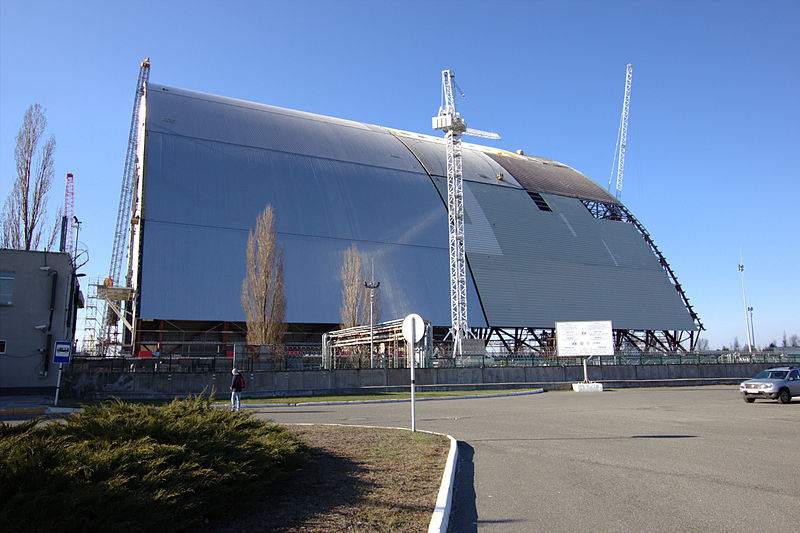When there is a major accident at a nuclear power plant and decommissioning of the site is difficult or impossible, one of the options is to build a huge shell of concrete and steel called a sarcophagus to serve as a tomb for the damaged reactor or reactors. The function of the sarcophagus is to entomb the reactor site to seal in dangerous radioactive materials for as long as possible.
In April of 1986, there was a major nuclear disaster at the Chernobyl Nuclear Power Plant in the city of Pripyat, in the Ukraine Soviet Socialist Republic of the Soviet Union. During a system test, there was a sudden power surge. Emergency systems failed and there was a much bigger power surge followed by a huge explosion and fire. The resultant cloud of radioactive particles and smoke drifted over and contaminated much the Western Soviet Union and Europe.
A sarcophagus was constructed beginning in 1986 to cover the accident site to seal in tons of radioactive materials. Miners dug a tunnel under the site so a concrete slab could be poured to prevent the hot fuel from melting through the floor of the reactor and sinking into the soil. Holes were drilled for observation and ventilation. In 1988, analysts concluded that the structure would need repair and upgrading within twenty to thirty years. However, by 1998, it had become obvious that the sarcophagus has serious structural problems. It was also found that rain water was leaking in through the holes, becoming contaminated and then soaking through into the soil under the site. The sarcophagus itself was too radioactive for workers to enter so it was decided that a new sarcophagus was needed to entomb the old one and planning and construction on the new structure began.
The New Safe Confinement structure was originally supposed to be finished by 2015 but construction delays and funding problems have pushed the completion date back to 2017. The structure is intended to protect the environment from the solid radioactive wastes for up to one hundred years.
The only other nuclear disaster as bad as Chernobyl was the Fukushima meltdown of three reactors in March 2011 following and earthquake and tsunami. In the five years since the disaster a great deal of work has gone into analyzing the problems at the site of the accident and finding ways to decommission the destroyed reactors and protect the environment and public health. One solution that has been implemented with some serious problems is an ice wall underground to freeze the soil and prevent the migration of contaminated water into the ocean. One major problem at the accident site is the location of the fuel from the melted reactors. It is now thought that fuel has melted through the reactor containment vessel and is moving down through the earth under the site.
There are two fuel location and retrieval techniques being explored but the decommissioning authority for Fukushima has just announced that they may opt to entomb the site with a sarcophagus rather than try to remove the fuel and demolish the buildings. If this is done, there will still be a problem with ground water being contaminated by the fuel underground and migrating into the ocean. In addition, the sarcophagus may be threatened by future earthquakes and tsunamis. However difficult and costly the decommissioning of Fukushima must proceed. It would be a very bad idea just to build a huge shell over the site and hope for the best.
New Safe Confinement sarcophagus at Chernobyl:
